Beethoven-themed tour of Trieste
The Beethoven Library House Museum is the ideal first stop on a Beethoven-themed tour of Trieste. From the Central European charm that Trieste offers you experience the emotional intensity of the colours and picturesque views of the town of Muggia.
What is striking about Muggia, the gateway to Istria and the last coastal town on the Italian Adriatic, is its distinct Venetian atmosphere, with the characteristic mandracchio (docks), picturesque alleys and traditional restaurants famous for fine seafood cuisine. The town’s monuments include the Venetian Gothic Cathedral, the Castle and the Romanesque Basilica of Santa Maria Assunta in Muggia Vecchia surrounded by the archaeological and nature park that offers a panoramic view of the Gulf of Trieste. Muggia can also be reached in about thirty minutes by Delfino motor vessel from Le Rive, Trieste’s waterfront.

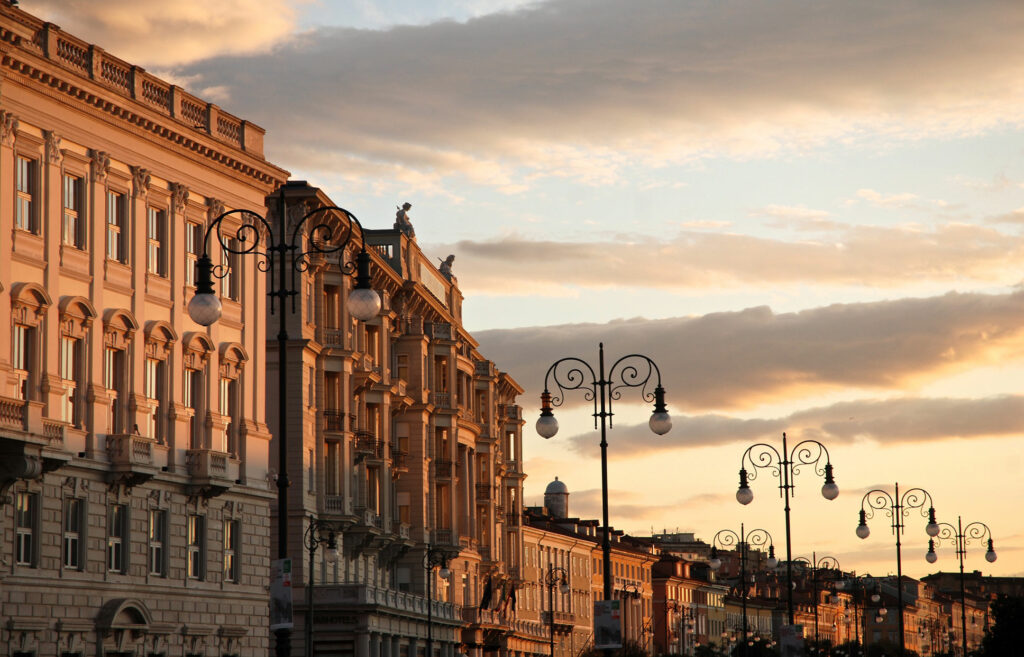

Beethoven in Trieste, narrated by Carlo de Incontrera
Triestino composer and musicologist, former professor of History and Musical Aesthetics at the Conservatory of Trieste and the Faculty of Literature and Philosophy at the University of Trieste, Carlo de Incontrera is a renowned Beethoven scholar. Carlo has continued and furthered his father Oscar’s research and studies into the German composer’s music and his links with Trieste.
In this brief and impassioned interview, he uncovers several intriguing facts and anecdotes about the indirect yet profound bond between Beethoven and Trieste. Among others, we learn about Beethoven’s passion for oysters and the Picolit wine, documented in the Conversation Books, and about his romantic passion for a young triestina, Giulietta Guicciardi. Yet we also learn about his friendship with Baron Joseph Benedikt Pasqualati von Osterberg, a native of Trieste and a very wealthy entrepreneur in Vienna, owner of the Pasqualati Haus where Beethoven spent a long and prolific period of his life, composing several of his great works.
Carlo de Incontrera provides a fascinating narrative that sheds light on the extraordinary economic and cultural liveliness of Trieste between the 18th and 19th centuries.
Piazza della Borsa, Trieste
Memories of an impossible love
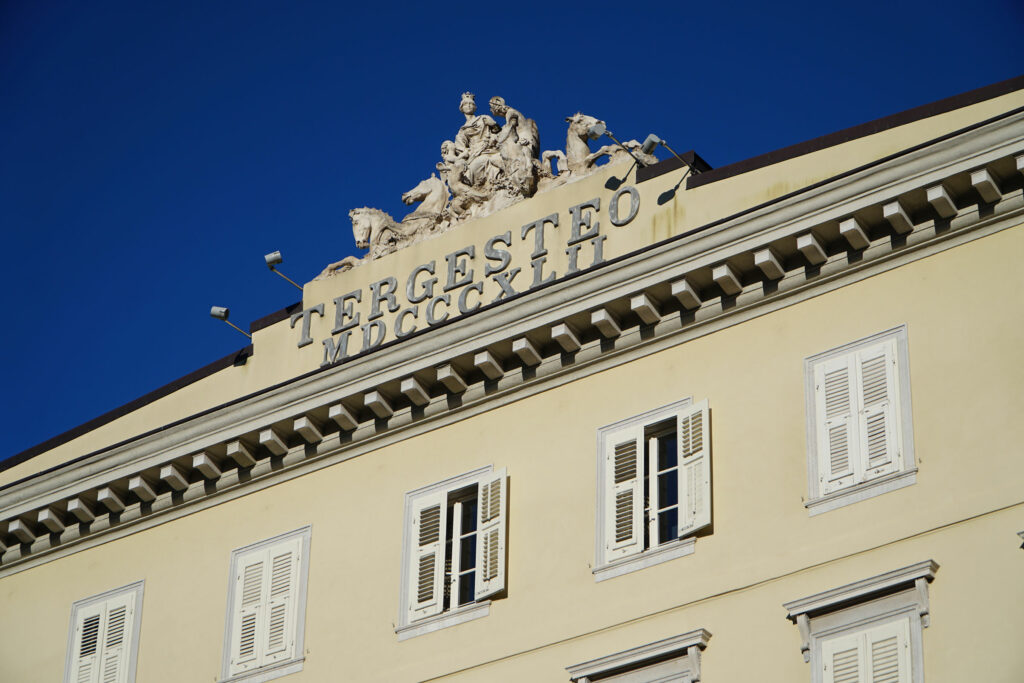
With its elegant arcade leading to the Teatro Verdi, Palazzo Tergesteo was built on the site of the Old Customs House, which was demolished in 1840. This is where Giulietta Guicciardi lived between 1796 and 1800, when her father, Franz Guicciardi, Count of Cervarolo, was engaged in government business in Trieste.
Aged sixteen when she arrived in Vienna in 1800, the young countess became Beethoven’s pupil. The composer dedicated the “Moonlight” Sonata to her and described her to his friend Wegeler as “a lovely fascinating girl who loves me and whom I love”, bitterly aware that their different social ranks made it an impossible love.
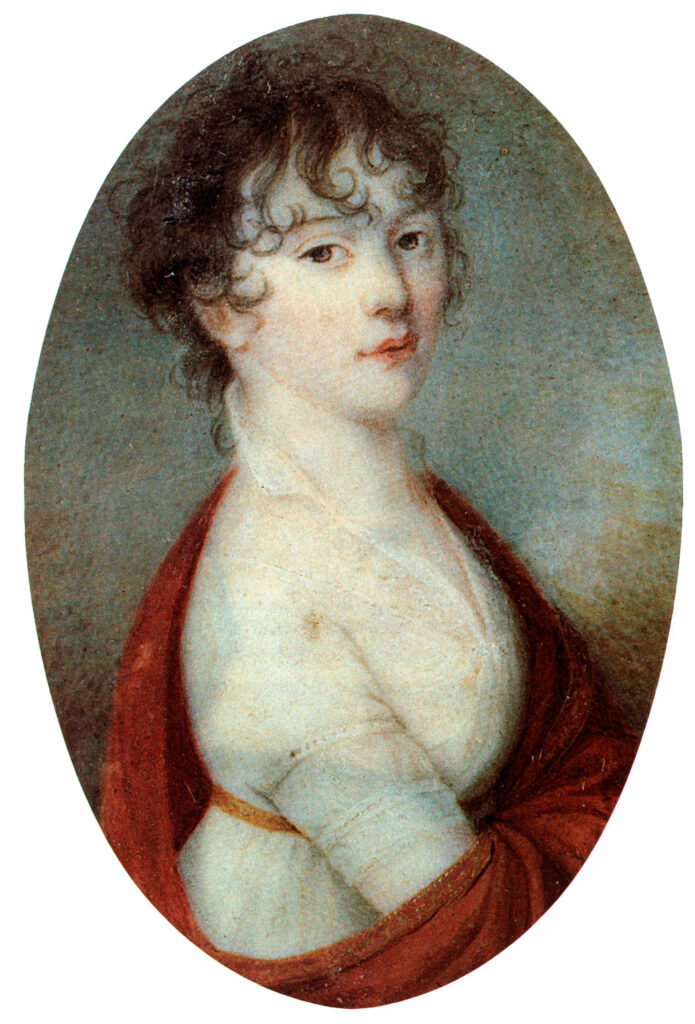
Portrait miniature of Giulietta Guicciardi.

Revoltella Museum, Trieste
A mesmerising, monumental painting
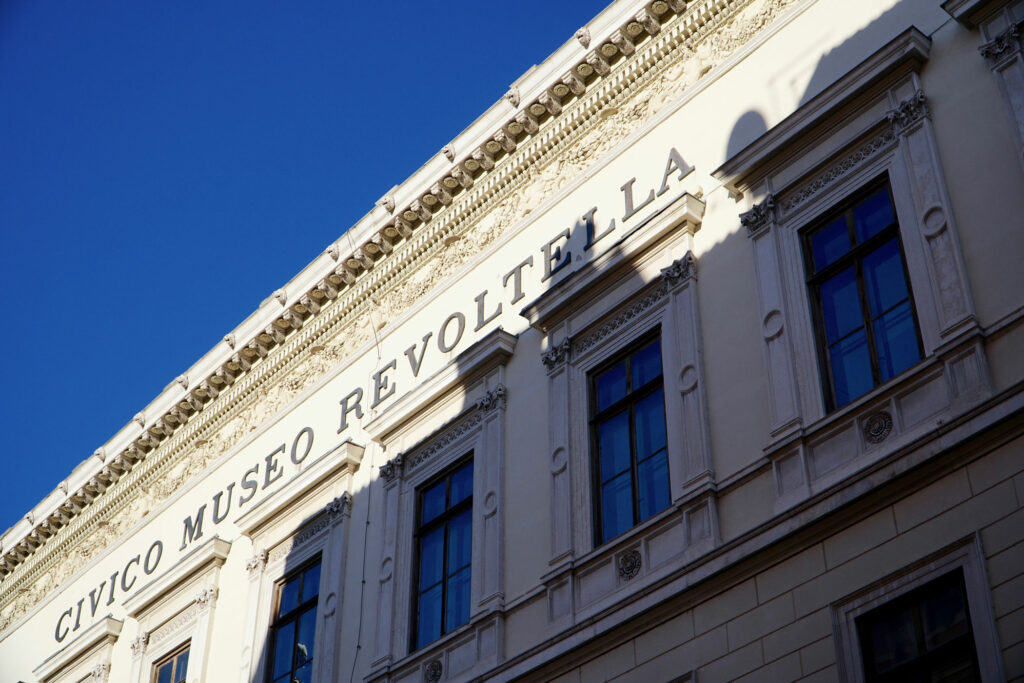
Museo Revoltella.
Once the residence of Baron Pasquale Revoltella, a wealthy merchant and investor born in Venice to a Jewish family, and vice chairman of the Universal Company of the Maritime Canal of Suez, Palazzo Revoltella is now home to Trieste’s most important museum. It has rooms preserved as they were in times past and a fine modern art gallery.
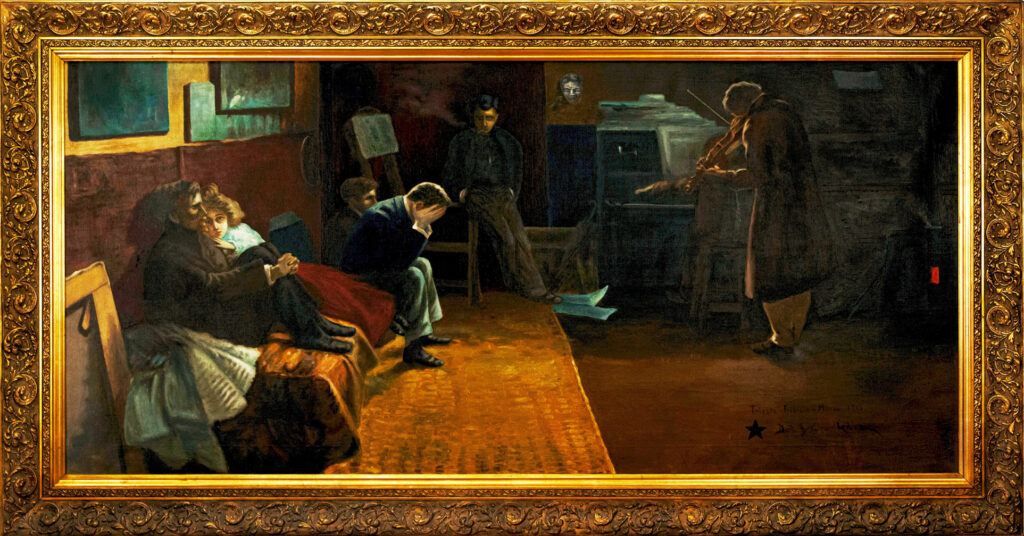

Among the masterpieces it houses is the monumental Beethoven (also Kreutzer Sonata) – 420×202 cm – by Lionello Balestrieri (*Cetona, 1872 – †Cetona, 1958), painted in 1899 and awarded a prize in 1900 at the Exposition Universelle in Paris. This popular Romantic work, of which countless copies were produced, depicts with unsettling charm a bare, humble room in Paris, where a violinist and a pianist are playing for a few friends, bohemian artists, each lost in their own emotions. In their midst, in the foreground of the painting, the artist is seated next to his lady. On the front wall, Beethoven’s life mask overlooks the scene.
Casa Ralli, Riva Grumula, Trieste
The home of Beethoven’s American biographer

Alexander Wheelock Thayer (*South Natick, Massachusetts, 1817 – †Trieste, 1897) was an American journalist, musicologist, diplomat, and author of Beethoven’s Leben, a monumental biography in five volumes. The final two volumes were completed posthumously from Thayer’s notes by his German colleagues Hermann Deiters and Hugo Riemann. Thayer lived and died at Casa Ralli. Given the calibre and accuracy of his research, which were extraordinary for the time, the biography is considered a fundamental work and the most reliable on the life of the German composer. Thayer wrote much of it in Trieste, where he was United States consul and resided for over thirty years. Here he was able to indulge his meticulous passion for Beethoven, in the favourable climate of this city with strong links with Vienna.
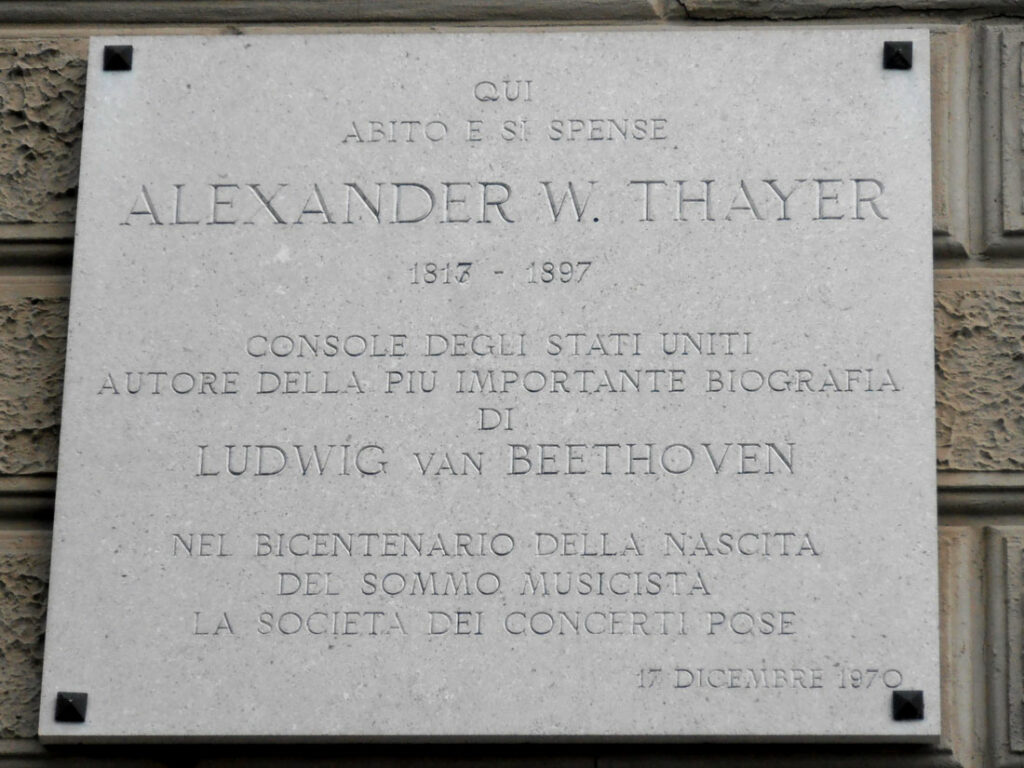
Evangelical Cemetery, Trieste
Thayer’s grave

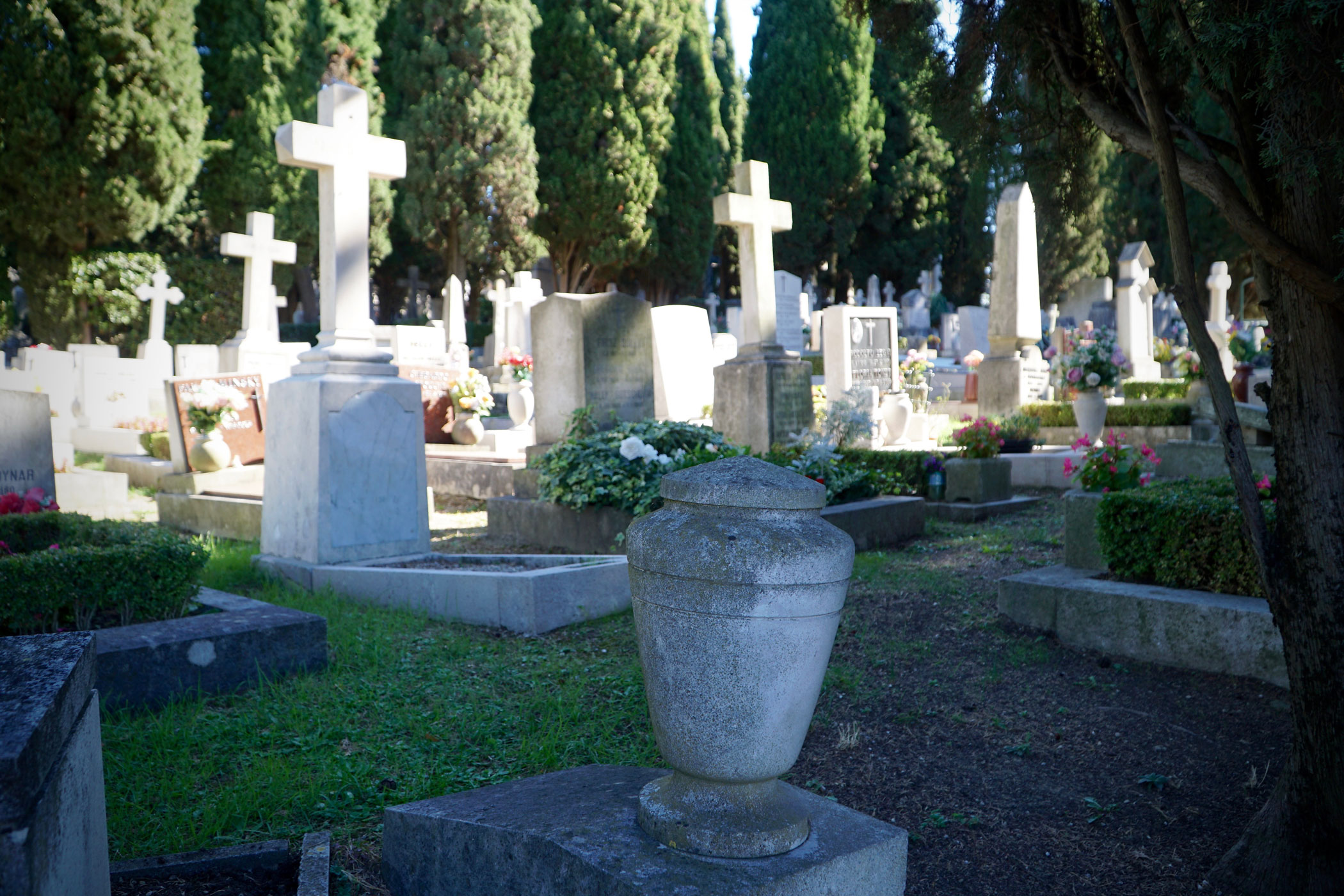
Alexander Wheelock Thayer’s grave was rediscovered thanks to the intense efforts of Trieste historian Oscar de Incontrera.
Villa Economo Gossleth, Trieste
A great friend of Beethoven… and Trieste
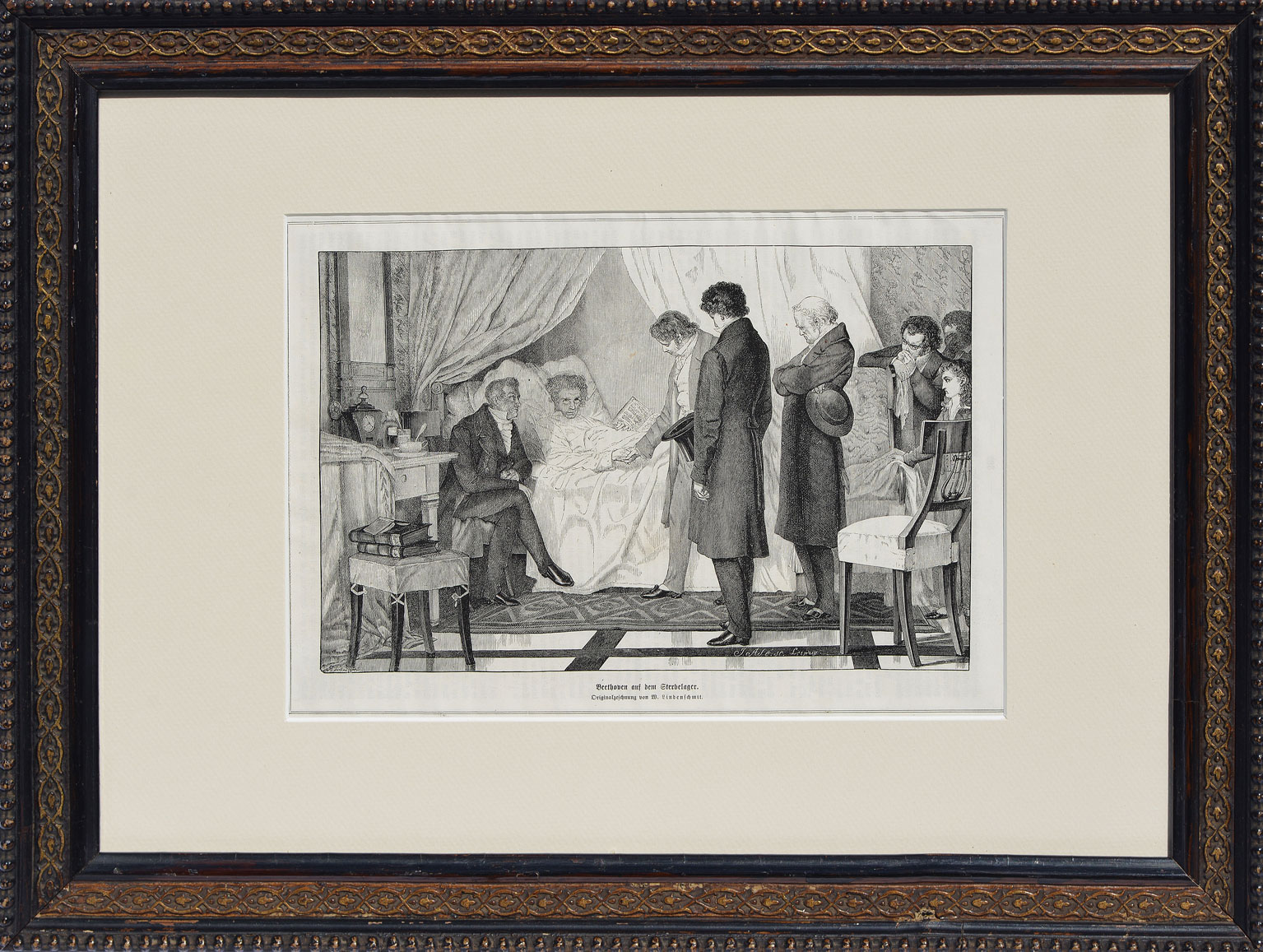
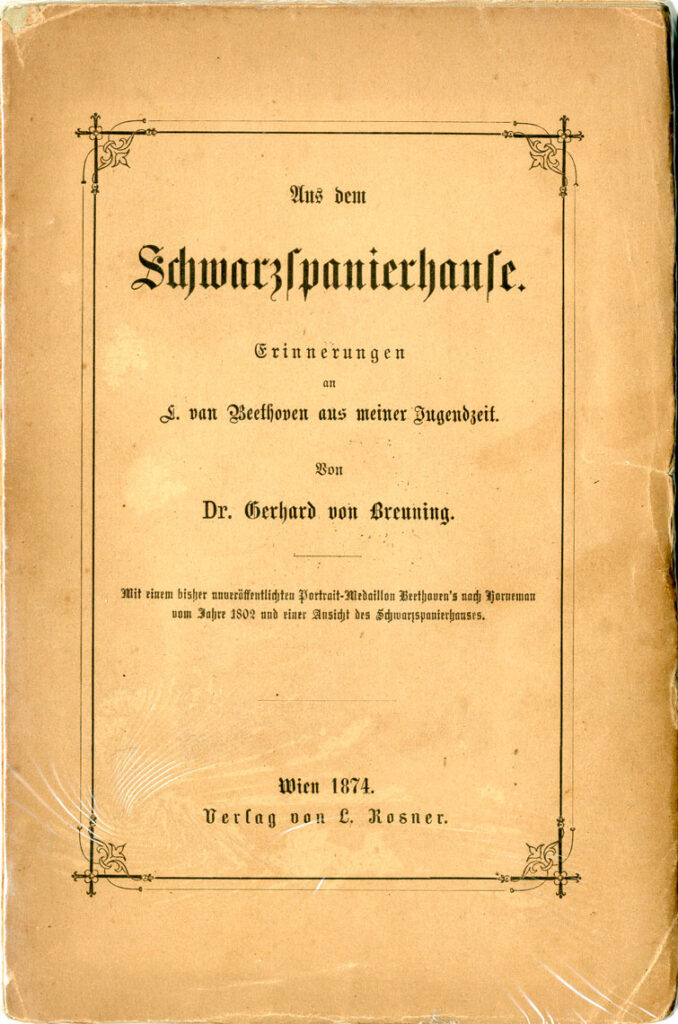
At the end of Le Rive waterfront, the neoclassical Villa Economo Gossleth reminds us of an extraordinary young friend of Beethoven’s, who was by his side in his final days: Gerhard von Breuning. After becoming a doctor, he came to Trieste as a renowned specialist in limb complaints. There he met and married Giuseppina, the daughter of Trieste industrialist Franz Gossleth, and became a regular visitor to his stunning residence in Largo Promontorio and to the city of Trieste.
Nautical Institute, Trieste
Beethoven: the ship that disappeared in the Pacific

In 1914 Trieste was shaken by the mysterious disappearance in the Pacific Ocean of the Beethoven, a sailing ship belonging to the city’s Nautical Institute (then the Nautical Academy). On board were 25 cadets from Trieste, Istria, Friuli and Austria. This unsolved mystery lives on, thanks to recent reports of possible descendants of the Beethoven’s shipwrecked crew “appearing” on remote islands in the Pacific. In 2014, exactly one hundred years after the ship’s disappearance, the Carrino family finally tracked down the only original oil painting of the sailing ship, produced in 1912. Did Fate lead them to it?
Casa Museo Biblioteca Beethoveniana, Muggia
Ludwig van Beethoven’s current residence
Home of the Carrino Collection dedicated to Ludwig van Beethoven.
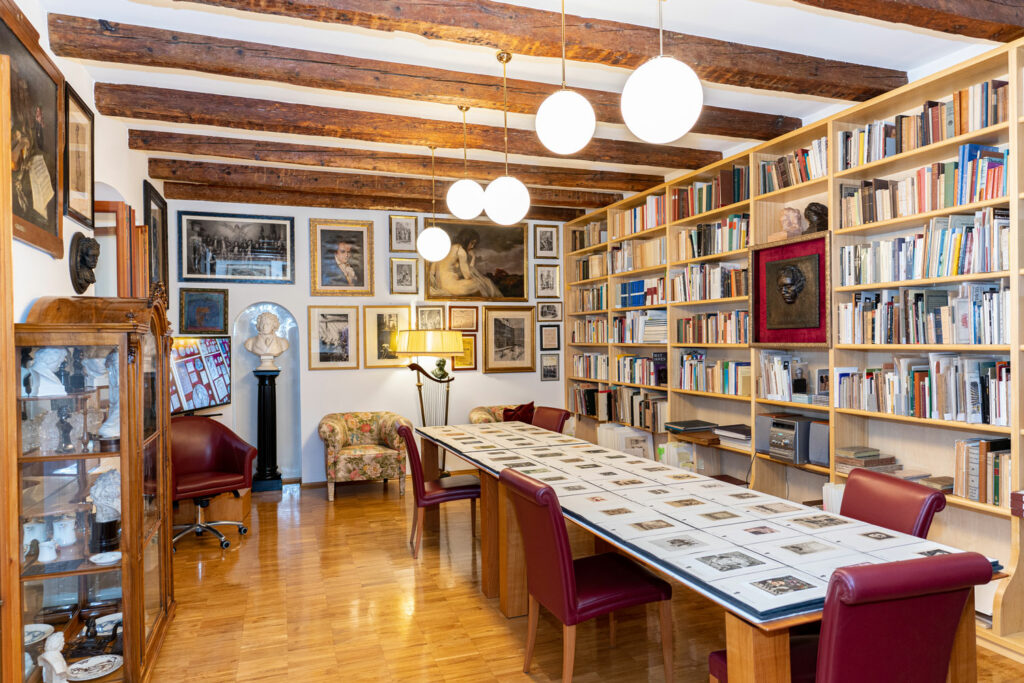
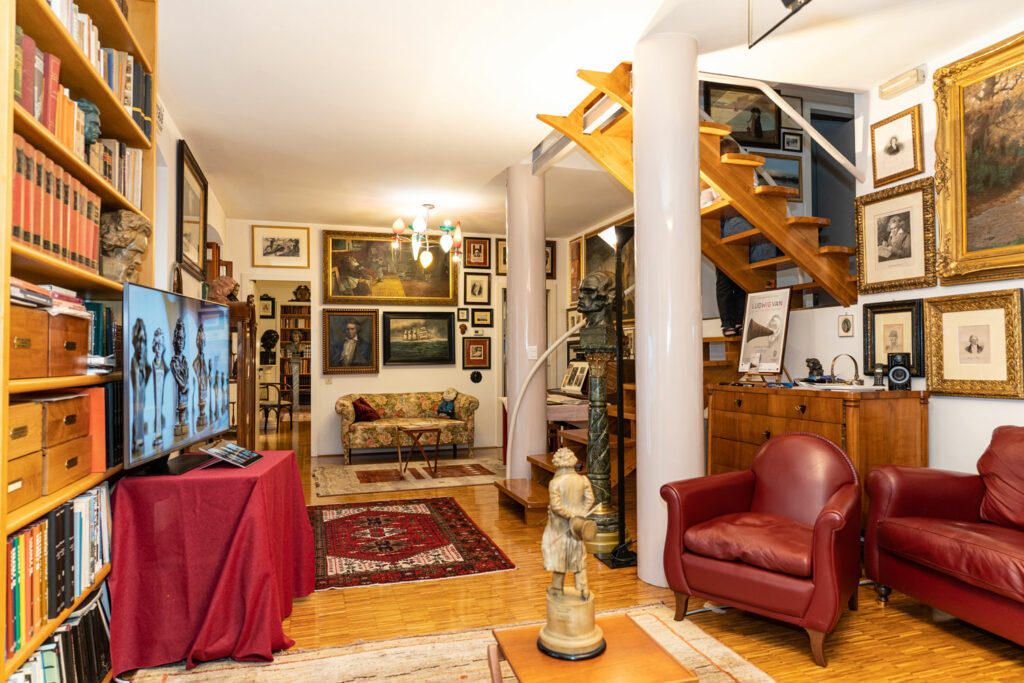
Oysters and Picolit
It is a widely known that the German composer spent most of his life between Bonn and Vienna, without directly experiencing the outer boundaries of the Empire. However, he did hold an image of the Adriatic as a place of epicurean bounty, and dreamed of travelling to the area to delight in the food and wine. Evidence of this is found in his Conversation Books, pages of notes between the deaf composer and his friends and acquaintances. In one of these he writes: “Sooner or later we’ll have to take a trip to Trieste and Venice to try the oysters”. In another, like a true connoisseur, he mentions Picolit, a noble wine of Friuli Venezia Giulia. It is clear that Beethoven the gourmet would have loved this region.
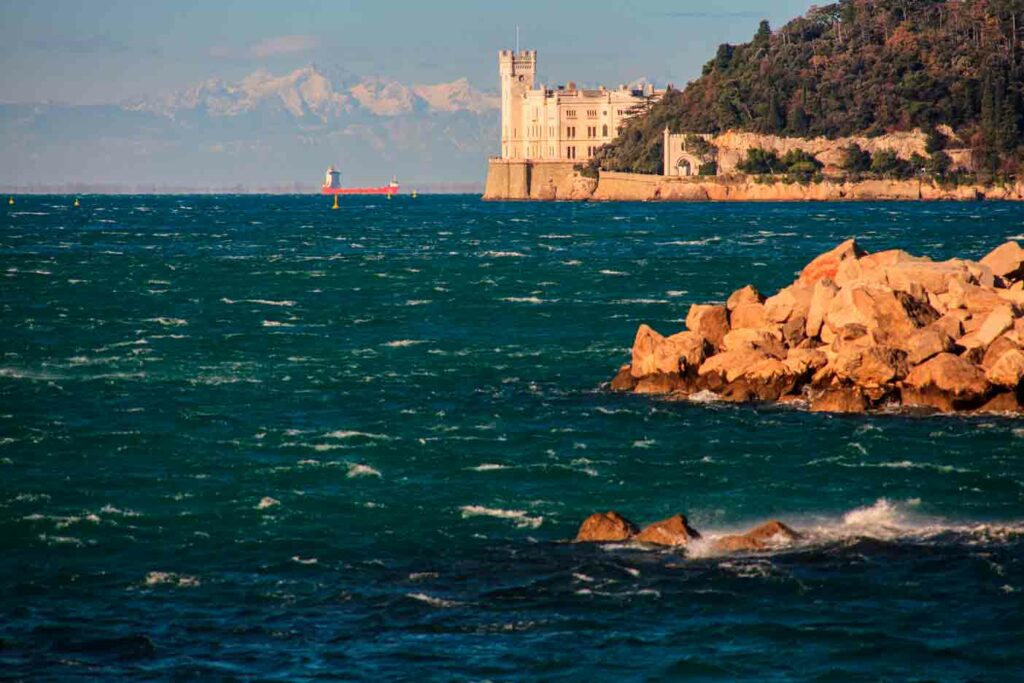
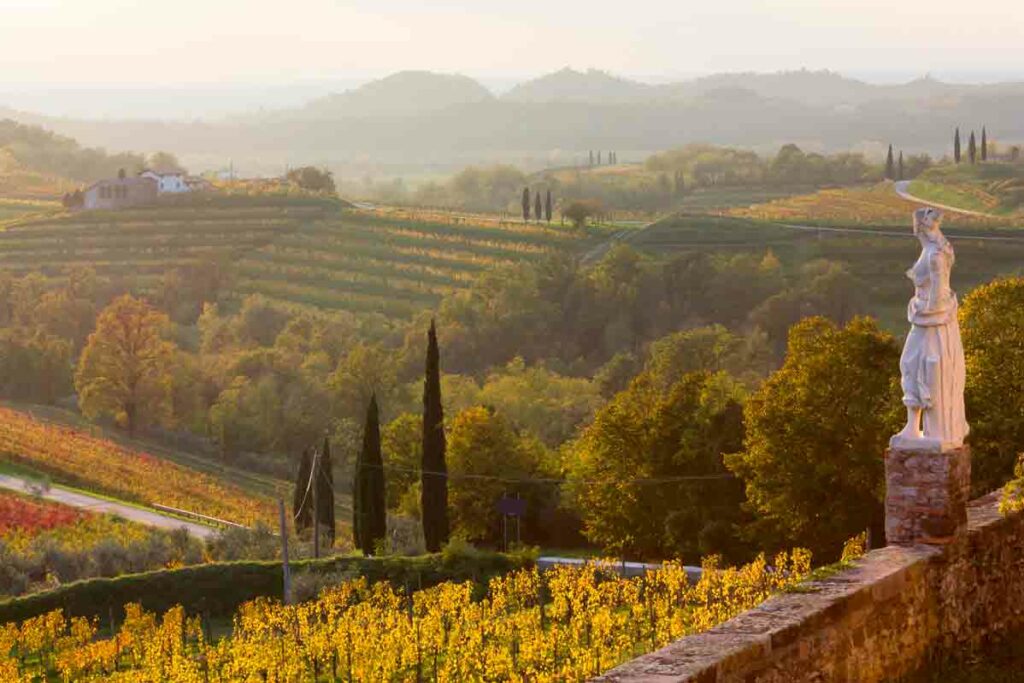
Beethoven in Trieste, narrated by Carlo de Incontrera
Triestino composer and musicologist, former professor of History and Musical Aesthetics at the Conservatory of Trieste and the Faculty of Literature and Philosophy at the University of Trieste, Carlo de Incontrera is a renowned Beethoven scholar. Carlo has continued and furthered his father Oscar’s research and studies into the German composer’s music and his links with Trieste.
In this brief and impassioned interview, he uncovers several intriguing facts and anecdotes about the indirect yet profound bond between Beethoven and Trieste. Among others, we learn about Beethoven’s passion for oysters and the Picolit wine, documented in the Conversation Books, and about his romantic passion for a young triestina, Giulietta Guicciardi. Yet we also learn about his friendship with Baron Joseph Benedikt Pasqualati von Osterberg, a native of Trieste and a very wealthy entrepreneur in Vienna, owner of the Pasqualati Haus where Beethoven spent a long and prolific period of his life, composing several of his great works.
Carlo de Incontrera provides a fascinating narrative that sheds light on the extraordinary economic and cultural liveliness of Trieste between the 18th and 19th centuries.
Piazza della Borsa, Trieste
Memories of an impossible love

With its elegant arcade leading to the Teatro Verdi, Palazzo Tergesteo was built on the site of the Old Customs House, which was demolished in 1840. This is where Giulietta Guicciardi lived between 1796 and 1800, when her father, Franz Guicciardi, Count of Cervarolo, was engaged in government business in Trieste.
Aged sixteen when she arrived in Vienna in 1800, the young countess became Beethoven’s pupil. The composer dedicated the “Moonlight” Sonata to her and described her to his friend Wegeler as “a lovely fascinating girl who loves me and whom I love”, bitterly aware that their different social ranks made it an impossible love.

Portrait miniature of Giulietta Guicciardi.

Revoltella Museum, Trieste
A mesmerising, monumental painting

Museo Revoltella.
Once the residence of Baron Pasquale Revoltella, a wealthy merchant and investor born in Venice to a Jewish family, and vice chairman of the Universal Company of the Maritime Canal of Suez, Palazzo Revoltella is now home to Trieste’s most important museum. It has rooms preserved as they were in times past and a fine modern art gallery.


Among the masterpieces it houses is the monumental Beethoven (also Kreutzer Sonata) – 420×202 cm – by Lionello Balestrieri (*Cetona, 1872 – †Cetona, 1958), painted in 1899 and awarded a prize in 1900 at the Exposition Universelle in Paris. This popular Romantic work, of which countless copies were produced, depicts with unsettling charm a bare, humble room in Paris, where a violinist and a pianist are playing for a few friends, bohemian artists, each lost in their own emotions. In their midst, in the foreground of the painting, the artist is seated next to his lady. On the front wall, Beethoven’s life mask overlooks the scene.
Casa Ralli, Riva Grumula, Trieste
The home of Beethoven’s American biographer

Alexander Wheelock Thayer (*South Natick, Massachusetts, 1817 – †Trieste, 1897) was an American journalist, musicologist, diplomat, and author of Beethoven’s Leben, a monumental biography in five volumes. The final two volumes were completed posthumously from Thayer’s notes by his German colleagues Hermann Deiters and Hugo Riemann. Thayer lived and died at Casa Ralli. Given the calibre and accuracy of his research, which were extraordinary for the time, the biography is considered a fundamental work and the most reliable on the life of the German composer. Thayer wrote much of it in Trieste, where he was United States consul and resided for over thirty years. Here he was able to indulge his meticulous passion for Beethoven, in the favourable climate of this city with strong links with Vienna.

Evangelical Cemetery, Trieste
Thayer’s grave


Alexander Wheelock Thayer’s grave was rediscovered thanks to the intense efforts of Trieste historian Oscar de Incontrera.
Villa Economo Gossleth, Trieste
A great friend of Beethoven… and Trieste


At the end of Le Rive waterfront, the neoclassical Villa Economo Gossleth reminds us of an extraordinary young friend of Beethoven’s, who was by his side in his final days: Gerhard von Breuning. After becoming a doctor, he came to Trieste as a renowned specialist in limb complaints. There he met and married Giuseppina, the daughter of Trieste industrialist Franz Gossleth, and became a regular visitor to his stunning residence in Largo Promontorio and to the city of Trieste.
Nautical Institute, Trieste
Beethoven: the ship that disappeared in the Pacific

In 1914 Trieste was shaken by the mysterious disappearance in the Pacific Ocean of the Beethoven, a sailing ship belonging to the city’s Nautical Institute (then the Nautical Academy). On board were 25 cadets from Trieste, Istria, Friuli and Austria. This unsolved mystery lives on, thanks to recent reports of possible descendants of the Beethoven’s shipwrecked crew “appearing” on remote islands in the Pacific. In 2014, exactly one hundred years after the ship’s disappearance, the Carrino family finally tracked down the only original oil painting of the sailing ship, produced in 1912. Did Fate lead them to it?
Casa Museo Biblioteca Beethoveniana, Muggia
Ludwig van Beethoven’s current residence
Home of the Carrino Collection dedicated to Ludwig van Beethoven.


Oysters and Picolit
It is a widely known that the German composer spent most of his life between Bonn and Vienna, without directly experiencing the outer boundaries of the Empire. However, he did hold an image of the Adriatic as a place of epicurean bounty, and dreamed of travelling to the area to delight in the food and wine. Evidence of this is found in his Conversation Books, pages of notes between the deaf composer and his friends and acquaintances. In one of these he writes: “Sooner or later we’ll have to take a trip to Trieste and Venice to try the oysters”. In another, like a true connoisseur, he mentions Picolit, a noble wine of Friuli Venezia Giulia. It is clear that Beethoven the gourmet would have loved this region.

